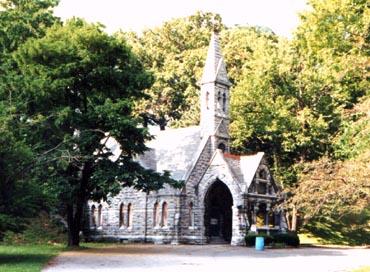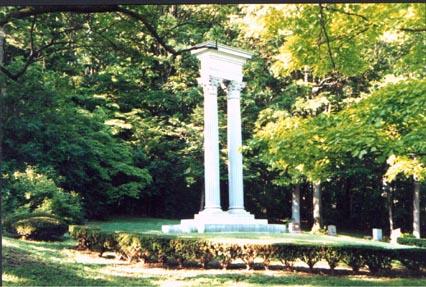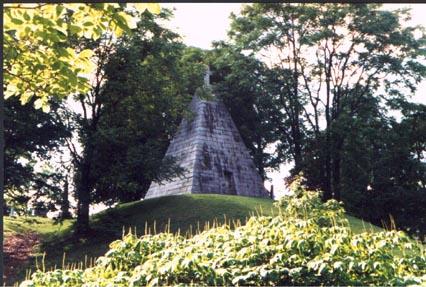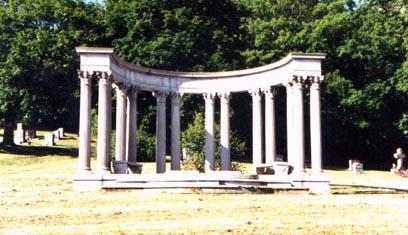| |
Comeup
fair Oakwood's shady aisles,
O'er which the summer morning smiles.
Above, the whispering oak tree weaves
A living, trembling veil of leaves,
Through which the scattered sunbeams pass,
The fragments falling in the grass.
Above, the bird of golden breast,
Has piped the sweetest reveille;
Has plucked and plumed his golden breast,
And from his swaying hammock nest,
Sends forth his greeting to the day.
So went the romantic poem of unknown authorship written in commemoration
of Syracuse's Oakwood Cemetery, one of the grandest and most beautiful
rural cemeteries in the nation. But on Labor Day's eve "whispering oak leaves"
roared, and "swaying hammock nests" soared, as the region's most violent
storm in history swept through the Cemetery in a howling rage. In a
ten minute maelstrom, huge white oaks, lofty sugar maples, and towering white
pines came crashing to the ground and changed the face of Oakwood's once
wondrous landscape for decades to come. A requiem would now be more fitting.
The romantic mood of the poem represented a nostalgia for the vanishing rural
landscape in an age of growing urbanization during the mid-nineteenth century
Victorian era. Based on the idea that natural scenery had a salubrious impact
on the mind, rural cemeteries served not only as a place to bury the dead,
but also as pleasure grounds, where one could stroll in a peaceful, pastoral
setting, and enjoy the quiet beauty of nature.
The rural cemetery movement was inspired by the works of the great early
landscape architecture pioneers Andrew Downing and Frederick Law Olmstead.
Incorporating the existing natural features of the land, rural cemetery
landscapes have a curvilinear layout, with varied topography, irregular land
divisions, and serpentine roads. The attraction of these beautiful rural
cemeteries is given by nature, wealth, and time.
Elias Leavenworth and Hamilton White took the lead to establish Oakwood Cemetery
in 1859. Howard Daniels, a landscape gardener from New York City, was
commissioned for its design. Daniels, with a work force of 60 men, worked
with the original 92 acres of dense oak forest interspersed with pine, ash,
hickory, and maple, and set the blueprint for what Oakwood Cemetery is today.
Many of the 150-year-old specimens remain today (though many were lost in
the storm).
As the burial place of numerous congressmen, wealthy businessmen, and other
dignitaries, as well as people of ordinary means, Oakwood Cemetery is an
outdoor museum of elegant funerary sculpture. Its magnificent array of monuments,
tombs, and mausolea represents the charm and architectural grandeur of the
Victorian era. Today, Oakwood Cemetery is overseen by The Oakwood Cemetery
Preservation Association, a non-profit citizen's organization serving
to preserve, promote, and protect the cemetery. Its mission includes a systematic
renewal strategy for trees and shrubs. In the wake of the Labor Day windstorm,
the organization has a very challenging task ahead of it.
The storm wreaked widespread damage to the cemetery's trees, as seen in the
following photos. Fortunately, Oakwood is receiving FEMA support to
help pay for the cleanup, and with the further support of concerned
citizens to plant new trees, and prune surviving trees, we hope one day to
see Oakwood Cemetery restored to its distinction as one of finest, most
magnificent cemeteries in the world.
For more pictures of Oakwood Cemetery, see the excellent
Shades of
Oakwood |
|





